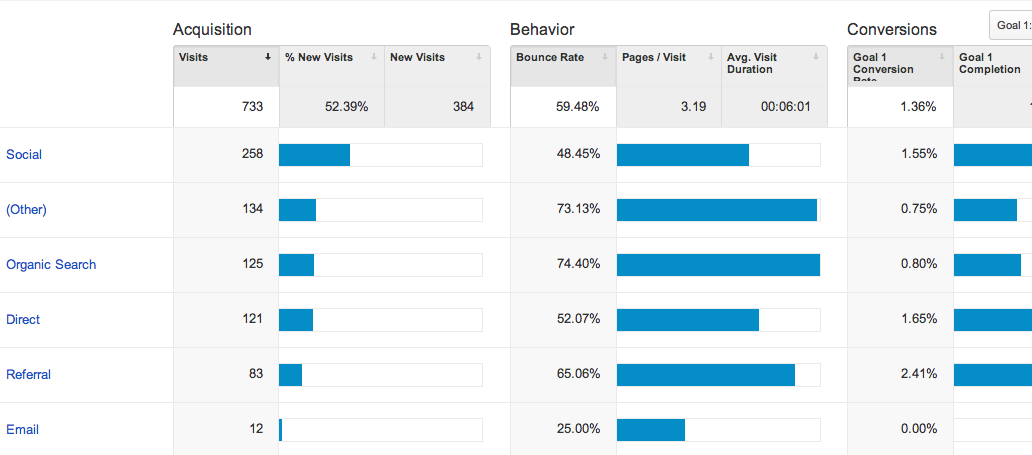Discover the Limitations of Google Analytics Goals: Unveiling the Information Kind That Remain Untrackable
As companies progressively count on data-driven decision-making, comprehending the limitations of devices like Google Analytics becomes extremely important. While Google Analytics Goals offer beneficial insights right into user communications, there exist information types that avoid tracking, posing challenges to a comprehensive understanding of individual habits. These untrackable information kinds raise concerns about the precision and completeness of the analytics data that organizations heavily depend upon for their electronic techniques. Interested to reveal the covert blind places in your data analysis process?
Incomplete User Journey Tracking
Incomplete individual journey tracking within Google Analytics can impede the capability to accurately analyze user habits. When the individual trip is not completely tracked, there are spaces in the data that protect against a comprehensive understanding of how customers communicate with an internet site. This absence of understanding can bring about missed out on possibilities for optimization and renovations to the customer experience.
One usual problem with incomplete customer journey monitoring is the failure to see the complete course that users take before finishing an objective or leaving the site. Without this information, it is challenging to determine where users may be running into barriers or friction factors that prevent them from converting. Furthermore, incomplete monitoring can cover the impact of specific marketing efforts or internet site adjustments on individual behavior.
To resolve this constraint, it is critical to establish up proper monitoring systems within Google Analytics to capture the whole individual journey. This might involve setting up event monitoring, objective funnels, or using devices like Google Tag Manager to ensure that no crucial interactions go unrecorded. By obtaining a detailed view of the customer journey, web site owners can make even more informed decisions to boost customer interaction and drive conversions.
Attribution Difficulties
Browsing with acknowledgment obstacles in Google Analytics needs an extensive understanding of exactly how different touchpoints add to the total conversion procedure. Acknowledgment difficulties develop from the complexity of modern-day client journeys, where individuals connect with several networks before transforming.
One common acknowledgment challenge is the trouble in associating conversions to the appropriate source, particularly in cases where customers engage with multiple networks before transforming. Additionally, cross-device monitoring positions an additional attribution obstacle, as individuals typically switch in between devices during their trip, making it challenging to track their communications flawlessly.
Offline Conversions
Provided the challenges related to associating conversions precisely in online networks, the dimension of offline conversions presents a substantial opportunity for marketers looking for a more detailed understanding of their consumers' journey. Offline conversions refer to activities that clients absorb the physical world, such as making purchases in brick-and-mortar stores or over the phone, participating in occasions, or involving with printed materials - what data is google analytics goals unable to track. These conversions are crucial for services that run both online and offline, as they provide useful understandings right into the effectiveness of advertising projects throughout various touchpoints
Tracking offline conversions traditionally postured a significant obstacle for marketing experts, as it was testing to connect these activities back to details online interactions precisely. With developments in technology, such as the assimilation of CRM systems, one-of-a-kind identifiers, and voucher codes, organizations can currently link the space in between online and offline data to acquire a more all natural sight of client habits. By effectively measuring offline conversions, marketing experts can enhance their strategies, designate resources more efficiently, and ultimately improve the overall customer experience.
Cross-Device Tracking
Cross-device monitoring plays a vital role in comprehending the interconnected nature of customers' digital communications throughout numerous devices. In today's omnichannel world, where customers seamlessly change between desktop computers, mobile phones, and tablet computers, tracking their actions across these devices is essential for marketing experts to acquire a thorough sight of their consumer journey.

Furthermore, privacy worries and laws such as GDPR and CCPA have internet further challenging cross-device monitoring. With individuals demanding more control over their data and enhanced limitations on tracking innovations, online marketers must find privacy-compliant and ingenious ways to connect user interactions across gadgets.
Dynamic Web Content Involvement
Recognizing customer involvement with dynamic material is essential in enhancing digital marketing methods for boosted target market communication. Dynamic material refers to website elements that transform based upon customer behavior, preferences, or various other factors, supplying an individualized experience. Nevertheless, tracking individual communications with vibrant material presents obstacles for traditional analytics devices like Google Analytics.
While Google Analytics can track standard interactions like clicks and web page sights, it may battle to capture more nuanced engagements within vibrant material. what data is google analytics goals unable to track. Metrics such as time invested in details dynamic aspects, hover activities, or communications within pop-ups are frequently not quickly quantifiable using standard tracking approaches. This limitation prevents marketing experts' capability to completely realize exactly how customers are engaging with vibrant content and customize their strategies appropriately

Final Thought
In conclusion, Google Analytics goals have limitations in tracking incomplete individual journeys, connecting conversions accurately, capturing offline conversions, tracking cross-device interactions, and determining vibrant material involvement. These restraints highlight the importance of exploring extra tracking techniques and tools to get a more thorough understanding of user habits and conversions past what Google Analytics can give.
While Google Analytics Goals offer important insights into additional info customer communications, there exist information types that elude tracking, presenting challenges to an extensive understanding of customer actions.Incomplete user trip monitoring within Google Analytics can prevent the ability to accurately evaluate user habits. When the individual journey is not fully tracked, there are gaps in the data that prevent an extensive understanding of exactly how individuals communicate with a web site.One usual concern with insufficient user journey tracking is the inability to see the complete path that users take in the past completing a goal or leaving the website. By getting a detailed view of the customer journey, website proprietors can make more enlightened decisions to enhance individual engagement and drive conversions.